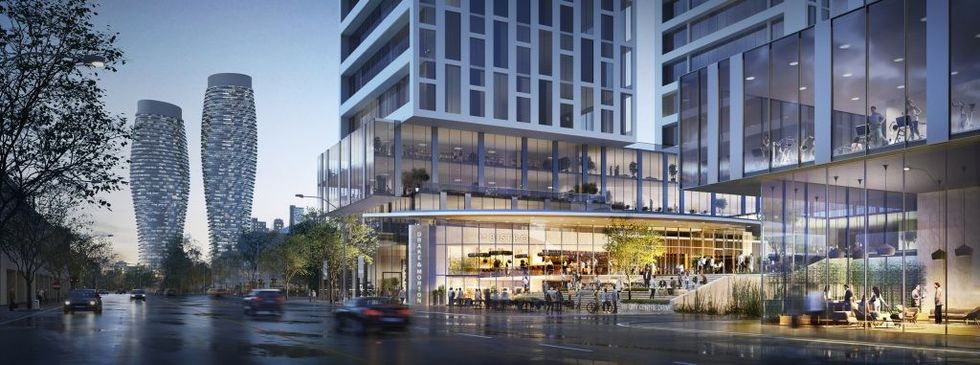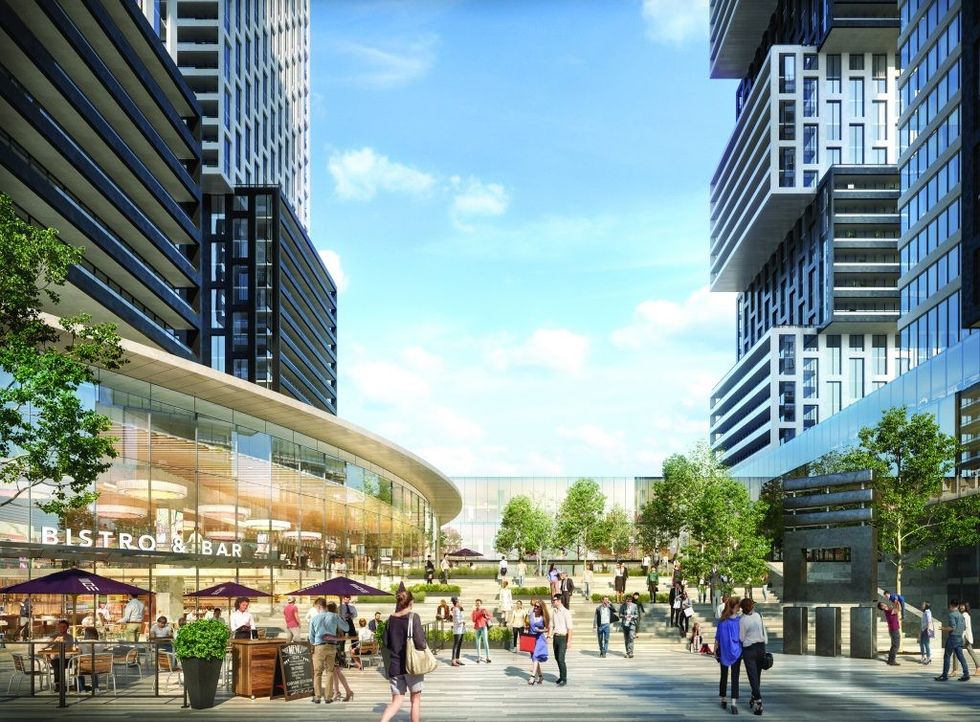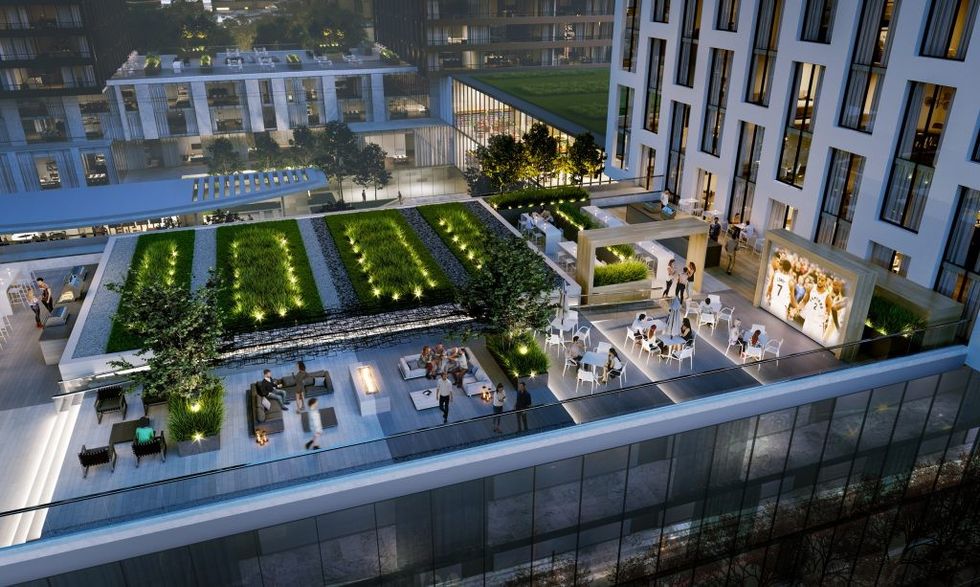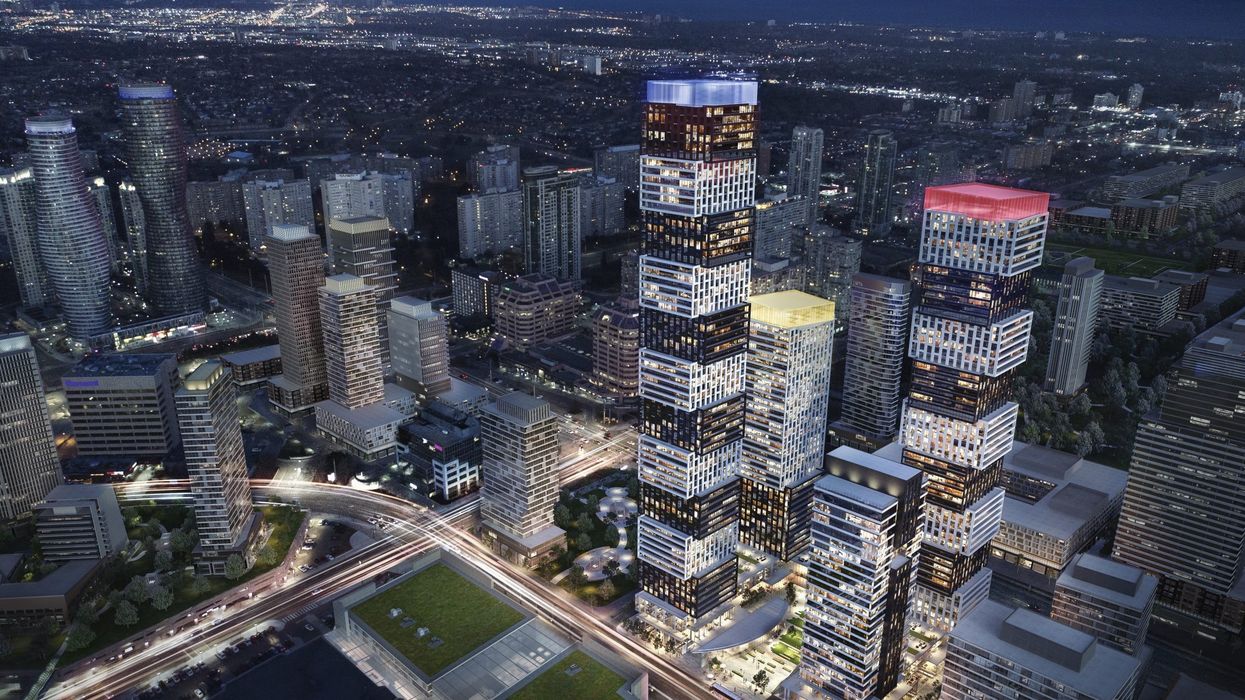It's not just buildings that matter in the new Mississauga, it's the space between them.
In a suburb that aspires to become a city, this is a crucial distinction. The decades old habit of a plunking a building down in the middle of a parking lot is no longer enough.
The latest example is the Exchange District, a quartet of high-rise condos by Camrost Felcorp just getting underway south of Square One at 151 City Centre Drive. Toronto’s IBI Group is handling the towers, but another, BDP of London, England, is designing the ground plane. Its task is to enliven the project at street level where most of us spend most of our time. As Gertrude Stein might have said, the challenge is to ensure there's a there there.

BDP architect, Adrian Price, whose happy job it is to design a place where people will choose to spend time, insists he's more than up for challenge.
"We've done a lot of projects like this," he explains. "Especially at retail properties that have dropped in value." Here those properties are called shopping malls and, indeed, many are being transformed into something different, not to mention, more urban. No surprise there: in an age of climate crisis, the pressure to put city land to better uses than department stores and parking is more intense than ever.
“We were shown a plan with four towers and a green space in the middle,” Price recalls. “We couldn’t see its value as public space. We were asked to animate the space.”

The big idea here is that spaces between buildings can offer more than just asphalt surfaces we pass over on our way from one place to another. BDP’s spaces are attractive, interesting and engaging in their own right. They are meant to be experienced by people on foot not glimpsed briefly drivers as they speed past. This offers a dramatic alternative to the traditional suburban world-view that separates the world by uses then connects them by highways as it forces residents into cars.
“We see this as a great opportunity to create a heart for Mississauga,” says Price. “It feels comfortable and right.” As he also points out, when he presented the plan to Mississauga City Council, members loved what they saw.
Vision of a Green, Walkable City
What stands out is the transformation of what would have been under-used space into a precinct designed for the pleasure of people whether they live there or not. In the many cities that have car-free streets, this wouldn’t seem particularly radical, but in car-dependent communities, the notion of putting people first can seem threatening. The implications are profound. Even in Toronto, where the mayor prioritizes driver convenience over all other issues, the areas people seek out are typically centered on streets – Queen Street West, College Street, Yonge, King, Bloor. By contrast, Mississauga’s best-known arteries – Burnhamthorpe and Hurontario – are suburban highways that wary pedestrians avoid whenever possible.
Also revealing is the contrast between the Exchange District and Mississauga’s de facto city centre famous, Square One, a giant box surrounded by a vast parking lot. Where the latter internalizes retail and the activity of shopping and everything that goes with it, the former brings it out into the open into the life of the city.

“This could be the start of a 20- or 30-year plan to urbanize Mississauga,” Price says. “We looked at Mississauga’s Downtown21 and saw that it outlined a vision of a green walkable city with a more city-like character.”
Clearly, the change won’t be easy; old ways die hard and the suburban dream still exerts enormous appeal. Though overtaken by ever-worsening congestion and unsustainable sprawl, the allure of affordable housing and a place of one’s own only grow stronger. At the same time, the reality of car dependency is impossible to ignore. Any number of recent studies tell us that given a choice people overwhelmingly prefer to live in compact, accessible, pedestrian-friendly communities. And we shouldn’t forget, since Mississauga was incorporated in 1974, it has grown into Canada’s sixth-largest city.
In other words, like it or not, Mississauga is a city. Now’s as good a time as any for it to start thinking like one.





















